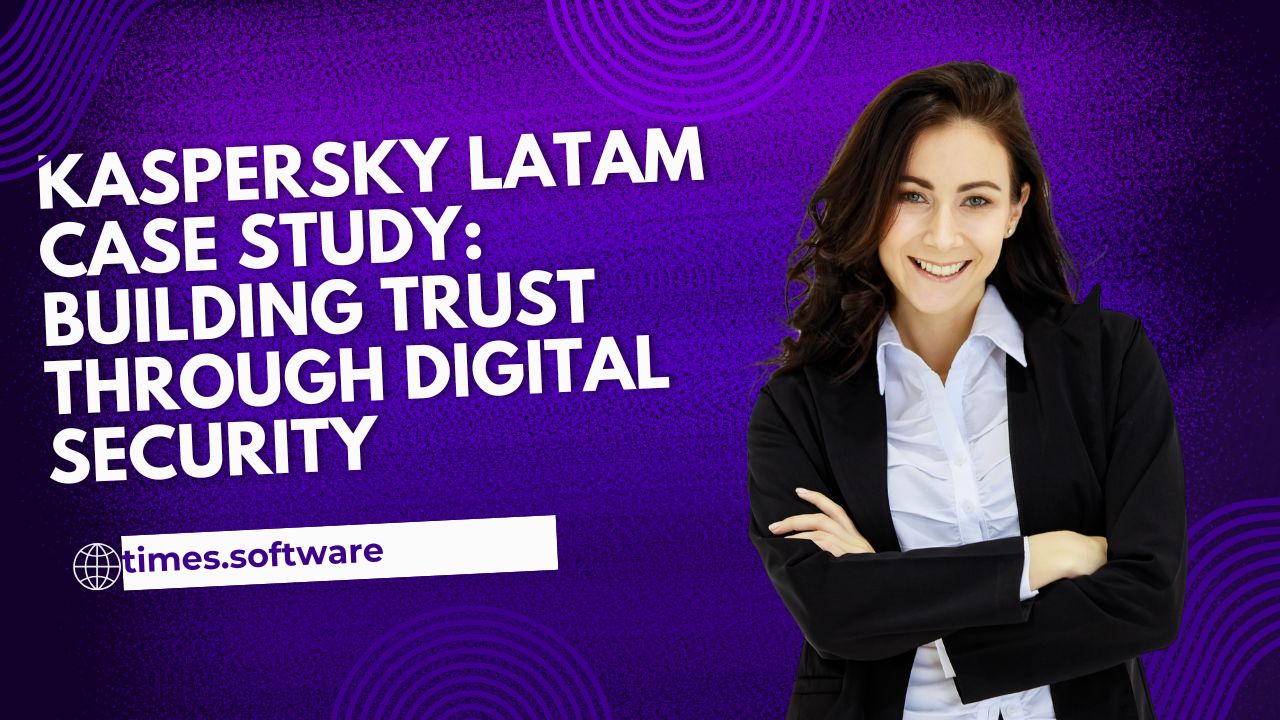
Kaspersky LATAM Case Study: Building Trust Through Digital Security
Discover how Kaspersky LATAM is transforming the cybersecurity landscape across Latin America. This case study explores the company’s innovative strategies for building digital trust through transparency, education, and advanced technology, highlighting real-world success stories that showcase its commitment to protecting businesses and communities online.
Table of Contents
ToggleIntroduction
In today’s interconnected world, trust is everything — especially when it comes to digital security. In Latin America (LATAM), where online threats have surged dramatically over the past decade, Kaspersky has positioned itself as a leader in protecting individuals, businesses, and governments. This case study explores how Kaspersky LATAM built digital trust through transparency, innovation, and education.
Understanding Kaspersky LATAM
Kaspersky, founded in 1997, has grown into a global cybersecurity powerhouse with a presence in more than 200 countries. In the Latin American region, the company established operations to tackle unique local challenges — from cyber fraud to ransomware attacks.
Its vision? To create a safer digital world where users can connect, work, and explore online with confidence.
The Cybersecurity Landscape in Latin America
Latin America has witnessed rapid digital transformation, with millions gaining internet access. However, this progress also opened doors for cybercriminals.
From ransomware targeting corporations to phishing scams aimed at individuals, the region faces one of the fastest-growing threat environments globally. Many businesses lack advanced defenses, making them easy targets for hackers.
Kaspersky recognized this gap early and stepped in with strong, localized solutions.
Kaspersky’s Approach to Building Digital Trust
Trust doesn’t come overnight — it’s earned through consistent transparency and reliability. Kaspersky’s LATAM division focused on three key pillars:
- Transparency: Open communication about operations and data handling.
- Education: Helping users understand digital threats.
- Innovation: Providing cutting-edge protection against evolving cyberattacks.
Key Strategies Implemented
Kaspersky’s regional strategy involved close collaboration with:
- Governments: Assisting in national cybersecurity programs.
- Businesses: Offering enterprise-grade solutions and training.
- Individuals: Running awareness campaigns and educational initiatives.
Its “Cybersecurity for All” campaign became one of the most recognized educational drives in the region.
Case Study Highlights
Through its efforts, Kaspersky LATAM achieved remarkable milestones:
- Helped a major financial institution prevent data breaches worth millions.
- Supported governments in developing national cybersecurity frameworks.
- Reduced phishing attacks in key markets by over 40% through awareness programs.
These success stories highlight Kaspersky’s commitment to real-world results.
Strengthening Local Ecosystems
Kaspersky’s approach wasn’t just about selling software — it was about empowering the ecosystem.
The company invested in:
- Training programs for local IT professionals.
- Collaborations with startups developing innovative security tools.
- Hosting cybersecurity summits across LATAM to discuss regional solutions.
By doing this, Kaspersky helped create a self-sustaining cybersecurity environment.
Building Public Awareness
Public education has been at the heart of Kaspersky LATAM’s mission. The company partnered with media outlets and universities to spread digital literacy.
Its campaigns, often focused on children, parents, and small businesses, taught practical safety measures like password hygiene, phishing awareness, and secure browsing habits.
Why HubSpot Is the Best CRM for Small Businesses
Why GOVEE MOMENTS TRADING LIMITED Is Leading in RGB Innovation
Social Catfish vs BeenVerified: Which Tool is Better for Background Checks?
Lordhair Maintenance Guide: Make Your Hairpiece Last Longer
Why Sonetel Is the Smart Choice for International Calling
Community Engagement Initiatives
To connect with local communities, Kaspersky launched multiple initiatives:
- Youth Cyber Safety Projects promoting responsible online behavior.
- University collaborations offering cybersecurity courses.
- Safe Internet Campaigns that reached millions via social media.
These projects not only raised awareness but also deepened trust among users.
Innovation and Technology
Kaspersky’s strength lies in its technological innovation. In LATAM, the company leveraged:
- AI-based threat detection systems that predict and neutralize cyberattacks.
- Cloud-driven infrastructure for faster and more secure data protection.
- Adaptive defense models that adjust to regional threat patterns.
This tech-driven approach ensured that LATAM users received world-class protection.
The Role of Transparency in Trust Building
Kaspersky’s Global Transparency Initiative became a cornerstone for trust. By opening data centers in neutral countries and inviting independent audits, Kaspersky showcased its commitment to openness.
For LATAM customers, this transparency reinforced confidence that their data remained safe and ethically managed.
Addressing Privacy Concerns
Data privacy remains a top concern for LATAM users. Kaspersky addressed this by:
- Storing and processing data in compliance with regional regulations.
- Implementing strict data anonymization protocols.
- Offering clear, user-friendly privacy policies to all customers.
Such steps positioned Kaspersky as a trustworthy brand in a market often skeptical about global tech companies.
Measuring Success and Impact
The impact of Kaspersky LATAM’s initiatives can be measured through tangible outcomes:
- Customer growth: Significant rise in enterprise and individual subscriptions.
- Trust metrics: Positive reputation across LATAM markets.
- Recognition: Multiple cybersecurity awards and certifications.
These metrics validate Kaspersky’s dedication to digital trust.
Lessons Learned from the LATAM Journey
Kaspersky’s experience in Latin America offers vital lessons:
- Localization is key — understanding cultural nuances builds better engagement.
- Transparency builds credibility faster than marketing.
- Collaboration with local entities ensures long-term sustainability.
These takeaways serve as a blueprint for other cybersecurity firms entering emerging markets.
Future Roadmap
Looking ahead, Kaspersky LATAM plans to expand its presence through:
- AI-enhanced threat detection models.
- Partnerships with fintech and government sectors.
- More educational outreach programs focused on rural and underprivileged areas.
The company aims to make cybersecurity accessible to every individual — not just corporations.
Conclusion
Kaspersky LATAM’s journey is a shining example of how trust and technology can coexist. By focusing on transparency, innovation, and education, Kaspersky didn’t just sell security products — it built a movement for safer digital living.
In a region as dynamic as Latin America, building digital trust is no small feat. But for Kaspersky, it’s a mission accomplished — and one that continues to evolve.
Frequently Asked Question
Kaspersky LATAM is the Latin American division of Kaspersky, focused on providing cybersecurity solutions and education across the region.
Through transparency, education, and collaboration with local governments, businesses, and communities.
Phishing, ransomware, and data breaches are among the most common threats.
By offering tailored enterprise solutions, training, and awareness programs.
Continued innovation in AI-driven security and expansion into more LATAM countries with localized partnerships.













